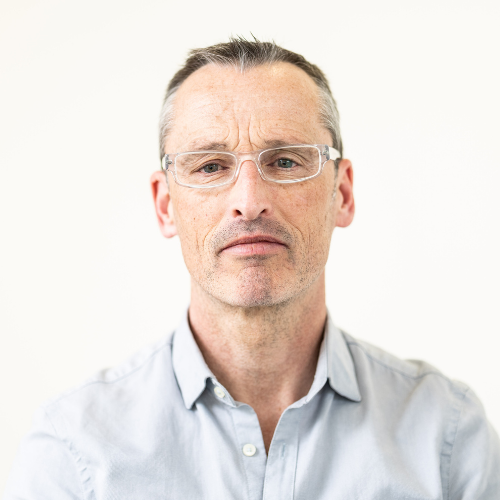
Voice of the Editor
Professor Damian M. Bailey, Editor-in-Chief, Experimental Physiology
“But what ultimately drew me to the field of physiology was the immersive experience of laboratory practicals where I quickly became hooked by its visceral immediacy, that all-important connection between abstract concepts to lived, observable, tangible phenomena. I fondly recall one of my earliest practical memories which taught me that physiology is indeed deeply personal, something I could relate to and which helped make the learning intrinsically more motivating.”

In the grand symphony of life sciences, physiology plays the central melody, harmonising the molecular with the whole, illuminating how the tiniest of threads weave into the fabric of living organisms. For our students, it offers unparalleled insights into how life is sustained with every breath we take, every molecule of oxygen consumed—from the whisper of cellular signals, rhythm of contracting muscles and brain’s orchestration of sensation to the body’s resilience in the face of environmental extremes, physiology tells the story of life in motu.
However, for those who have the responsibility and privilege of teaching physiology, its depth and breadth can be daunting—how to bring its intricate stories to life in ways that captivate, inspire and endure in memory? And how best to maintain that delicate dance between research and teaching— the age-old tussle between building an h-index while earning high praise from students in an increasingly competitive environment? Yet within these very challenges unfold a realm of rich educational opportunities.
Contemporary teaching methods have blossomed beyond the traditional lecture hall, embracing more dynamic and student-centred approaches that help invigorate and ‘breathe life’ into our discipline. How many of us more seasoned physiologists fondly recall having to ‘carb-load’ to survive the neural demands of back-to-back three hour marathon didactic lectures that felt more akin to Special Forces selection?! Contemporary classrooms frequently ‘flip’, with students engaging with core material outside of formal lectures, using class-time for more focused engagement that encourages problem-solving and peer interaction.
Learning is increasingly anchored in real-world applied or clinical narratives, where the mysteries of, for example, what happens if an astronaut’s spacesuit fails in the vacuum of space or how our body responds to the combined stresses of hyperbaria-hypoxaemia-hypercapnia during a ‘No Limits’ free diving world record attempt, are unravelled. Simulation and hands-on practice remain essential threads in this evolving educational tapestry—with the aid of digital tools, students can manipulate virtual organs, experience microgravity in real time, and explore the pathophysiology of disease in safe, controlled environments. Wow!
But what ultimately drew me to the field of physiology was the immersive experience of laboratory practicals where I quickly became hooked by its visceral immediacy, that all-important connection between abstract concepts to lived, observable, tangible phenomena. I fondly recall one of my earliest practical memories which taught me that physiology is indeed deeply personal, something I could relate to and which helped make the learning intrinsically more motivating.
It involved controlled hyperventilation—an unforgettable moment of awe as I watched the Doppler ultrasound trace of my cerebral arterial waveform slowly but surely peter out. The vibrant whoosh-whoosh softened into a muffled wowo-wowo, the rhythmic pulse of cerebral blood flow slipping into stillness as my senses dulled, feeling myself drifting into another dimension. What better way to grasp, firsthand, the brain’s insatiable hunger for oxygen than to experience the effects of hypocapnia-induced cerebral vasoconstriction, in my own skull?!
And in later years, I had the privilege of experiencing firsthand what occurs when gravity—that fundamental force that has shaped Earth’s four-billion-year history and guided evolution of the human brain for directed locomotion when life transitioned from water to land—is suddenly withdrawn from beneath you, or rather, all around you, during a parabolic flight. No stranger feeling that words simply don’t do justice to, but experimentation does! Best surmised by the American philosopher and educational reformer, John Dewey, “Give the pupils something to do, not something to learn; and the doing is of such a nature as to demand thinking; learning naturally results” (Dewey, 1916). That philosophy still resonates powerfully today in our physiology classrooms and transcends mere knowledge transmission—it inspires, challenges, and awakens a sense of wonder in the living machinery of the human body—on that symphonic note, what’s your fondest memory of a physiology practical?
Teaching becomes especially impactful when enriched by personal research that students are exposed to up-to-date scientific advances and the real-world process of discovery, encouraging them to see beyond the data and diagrams of standard textbooks. My own work explores human physiology in extreme environments—spaceflight, high-altitude mountaineering, freediving, and skydiving. These unique models that combine science with adventure serve as powerful tools for making complex concepts relevant and memorable. Students—both past and present, myself included—often recall these moments as pivotal experiences when physiology truly clicked and their understanding began to take shape, setting them on their professional path.
While we all carry memories of inspiring (and perhaps less inspiring!) teachers throughout our careers, I often seek feedback from my own students to better understand what they, as engaged learners—and, indeed, as paying stakeholders—value most in effective teaching. Here’s what one of my students (Danny Walmsley) has to say:
“The key component of an engaging teacher is passion for the subject, a desire to look under the hood at the mechanics beneath physiological phenomena, someone for whom surface-level knowledge does not suffice and prescribes their students not to settle for it either. The ability to tailor their teaching material to the audience is also crucial, applying, for example, physiological teachings to relevant sporting contexts for exercise physiology pupils, or to specific clinical contexts for medical science students. Thirdly, clear and efficient communication is paramount to teaching complex mechanisms in physiology.“
To that end, I firmly believe that teaching physiology is indeed both a responsibility and a privilege. By embracing diverse pedagogical approaches, incorporating research-informed content, and sharing the excitement of real-world scientific discovery, we can cultivate curiosity, critical thinking, and a lifelong appreciation for the living world. In doing so, we prepare not only future physiologists—but engaged, informed citizens of our ever-changing biological world.
Reference
Dewey J (1916). Democracy and Education: An Introduction to the Philosophy of Education. Macmillan, New York, USA.
Find out more about Experimental Physiology and the journal’s latest call for papers.



